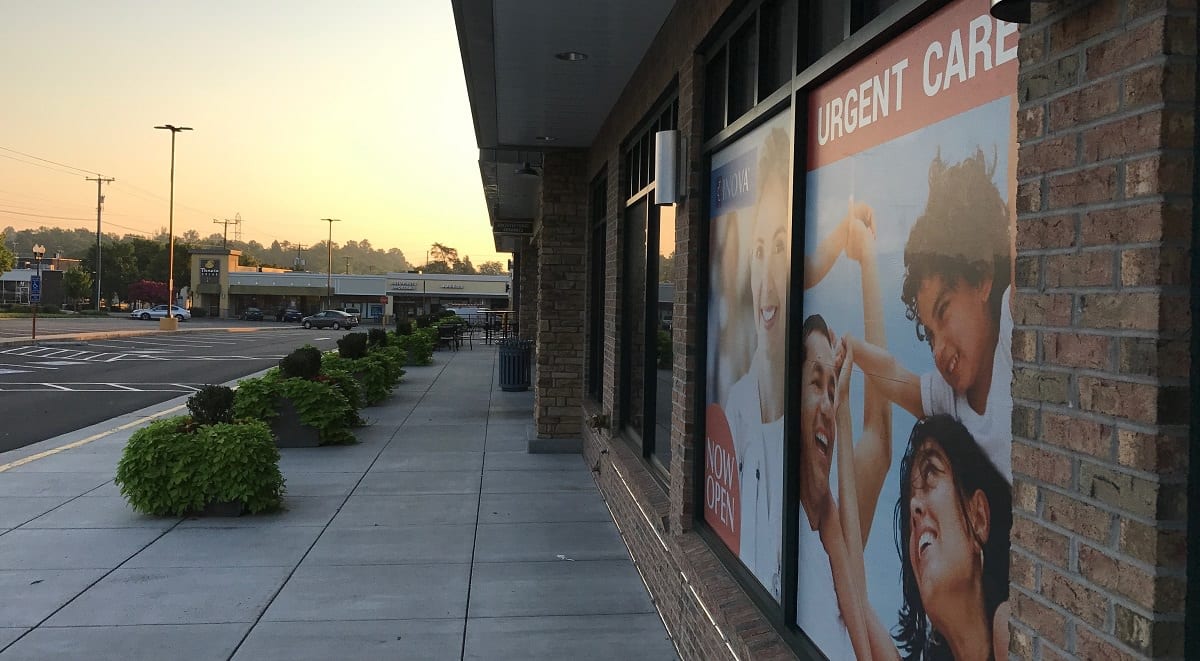At a time of struggling brick-and-mortar retail centers, medical facilities see an opportunity: Hospital and healthcare systems are increasingly expanding their services into existing retail properties.
Why? Put simply:
Medical facilities want to be closer to where their patients live and work. What’s more, these retail properties – some vacant – offer easy access, good visibility, and ample parking.
This means that healthcare providers are looking beyond the usual greenfield sites – focusing on existing shopping plazas and strip malls to house urgent care centers and other specialty centers. In some cases, unused parking allows for pad site development on the perimeter of mall properties – scenarios that end up being as good as greenfield development in terms of ease of starting from scratch.
Benefits and Challenges of Reused Retail Spaces for Healthcare
These adaptive-reuse projects provide a variety of benefits to healthcare organizations, including significant cost reductions compared to greenfield projects. What’s more, healthcare providers find they can get a new property in operation within a few months and with a lease commitment of five years or so.
Are there drawbacks to this strategy? Recent experience reveals a few concerns:
- renovated sites need to pay closer attention to the unique transportation needs that patients require,
- some renovated retail sites don’t necessarily provide the same security and privacy that greenfield-built doctor’s offices are used to, and
- some former retail sites aren’t always built with the precision or sturdiness needed to run sophisticated medical equipment.
But, healthcare providers are finding solutions to these issues in the renovation process.
The Transportation Aspects of Renovated Retail Spaces
From our point of view, we find that healthcare organizations need to be sure that they also pay proper attention to the transportation and access aspects of these renovated facilities. No two properties are alike, and each type of healthcare facility has unique needs.
Then there is the point of view of property owners and managers who are trying to fill retail space with medical uses. Before embarking on a full-scale project, they also should understand the implications of traffic circulation and parking, notably on patients. In the minds of healthcare providers, patients rightly come first.
Here is a list of transportation issues that may require proper transportation planning before a medical facility can be ready to receive patients in a renovated retail site:
- Patient Access: Do renovations need to be made to properly accommodate patient drop-offs and pickups? Does valet service need to be implemented?
- ADA Compliance: Is the site in compliance with Americans with Disabilities Act requirements? Upgraded crosswalks, handicapped parking allocations, ramps, etc. may all be required to meet ADA requirements and further enhance the patient experience.
- Ambulance Access: Does accommodation or reconfiguration need to be made for ambulances to properly access the facility?
- Access Modifications: Does access to/from the site need to be modified for the benefit of patients, staff, emergency vehicles, and deliveries?
- Labor Force Access: How can enhanced transportation options provide employees with greater and more reliable access for their daily commutes?
- Site Circulation: Does the subject site need to be reconfigured to provide better on-site circulation for vehicles and pedestrians alike?
- Loading Dock Considerations: Does a loading dock need to be built, or does an existing loading dock need to be reconfigured or expanded to adequately serve a medical facility?
- Parking Analysis: Is adequate parking available immediately adjacent to the facility? Proposed pad site developments may require an analysis of existing parking inventory versus what would be required with the new use.
- Parking and Security: Has the need for enhanced security measures (lighting, cameras, staff, etc.) in parking areas and at entrances been professionally evaluated?
Our Hospitals and Healthcare Transportation team manages the myriad transportation and accessibility issues that hospitals and healthcare facilities face. For more information, visit our Healthcare Transportation practice.

